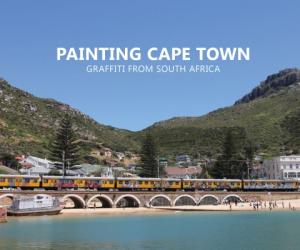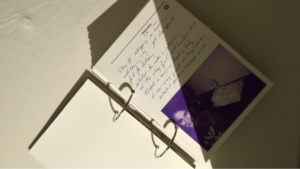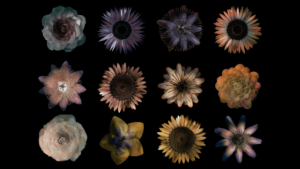Painting Cape Town: Graffiti from South Africa is one of the first books to capture the Cape Town graffiti scene in detail. The 250-page book includes interviews with 29 of Cape Town’s most prolific and recognised graffiti writers, such as Dek3, Faith47, Falko, Mak1 and Wealz, as well as photographs dating from the early 1990s. The book had its origins in a blog started by Matthew Olckers to document his fascination with the subculture and has now also been turned into a 20-minute documentary that will be screen at the upcoming Durban International Film Festival. In this Q&A we chat to Olckers to get the back story to the project:
What is your background?
My educational background is in economics. I work at a large asset management company and balance my job in financial services with an eclectic range of interests. I always have a few side projects on the go.
What inspired you to start photographing Cape Town's graffiti scene back in 2007?
In 2007, there were no active websites that showcased new South African graffiti on a regular basis. I craved seeing new images to feed my graffiti obsession and decided to start a graffiti blog myself. The blog was called Painting The Town and was active for about three years.
Did you intend to turn your photographs into a book from the outset, or did this idea develop as you progressed?
I think it was always a goal to turn Painting The Town into something tangible. A website can be deleted in a matter of hours so I wanted to use the insight gained to produce something more permanent. I started to do a couple of interviews as the blog evolved and I found that the interviews were far more interesting than any of my photographs. The goal of my book was to record some of the stories that would otherwise only be shared between graffiti writers.
The stories that accompany the work you chose to feature in the book must be fascinating – which stand out for you the most?
It’s very difficult to pick out one... Artist Croe described how he hid among the kelp in the sea to evade the police. The way he takes the reader through the experience makes this story stand out. In another, I found it fascinating how Enos rationalises why he paints graffiti. That was my favourite interview.
Whose work do you find particularly inspiring?
For me, there is nothing better than watching a fresh toe panel [train carriage painted below the windows] rolling by. It's what inspired my interest in graffiti when I was 15 years old and continues to make my jaw drop ten years later.
How would you define the difference between the aims of street art and those of graffiti?
A street artist aims to spread an idea or concept on the street. They generally use a wider range of mediums. A graffiti artist is rooted in the subculture that started in New York in the 1960s and 70s. The goal is to get your name up in as many places as possible, as stylishly as possible. In Cape Town, we have many committed graffiti artists but hardly any committed street artists.
Have people's views on graffiti changed at all in recent years, with the rise of credibility given to this form of art?
In 2011, the Museum of Contemporary Art (MOCA) in Los Angeles hosted the first survey exhibition of graffiti and street art, titled Art in the Streets. I don't think the same level of public recognition has spread to South Africa. The general public still hold the same misconceptions about street art and graffiti. Pretty and legal is separated from ugly and illegal. Graffiti and street art can't be categorised this way. The common statement is 'I like the colourful murals but I don't like those tags'. What most people fail to understand, is that the tag is the seed for an elaborate mural. I don't think people’s views on graffiti have changed much. One major goal of my book is to help people make a more informed decision.
Were it to be legalised, what impact would this have on SA's graffiti subculture?
The local government's current approach to graffiti demonises the subculture. If legalised, graffiti would likely turn into a common hobby and become a lot more widely accepted. Instead of playing soccer in the park or taking a hike on the mountain, people might choose to paint a wall.
Director Katey Lee Carson has turned Painting Cape Town into a short documentary, being featured at the upcoming Durban International Film Festival – how involved were you with the production of the film?
I was overjoyed when Katey showed interest in using my book to inspire a documentary. She is an extremely talented director and producer. I helped to connect Katey with the artists and I have also been interviewed in the documentary. I worked very closely with her to make sure that the documentary showed an accurate representation of the scene. Katey found an interesting narrative and highlighted parts of the subculture I took for granted. I am very happy with how the documentary came out.
Do you see this as an ongoing project: will we see perhaps a Painting Joburg in the future?
Not for now. I would have to live in Joburg to capture their graffiti scene accurately. It is tempting, Joburg has a growing graffiti scene and Cape Town is stagnant. It would be great to spend some time in a city where graffiti is not painted grey moments after it arrives.
Catch the screening of Painting Cape Town at the Durban International Film Festival from 17 to 22 July 2014.












